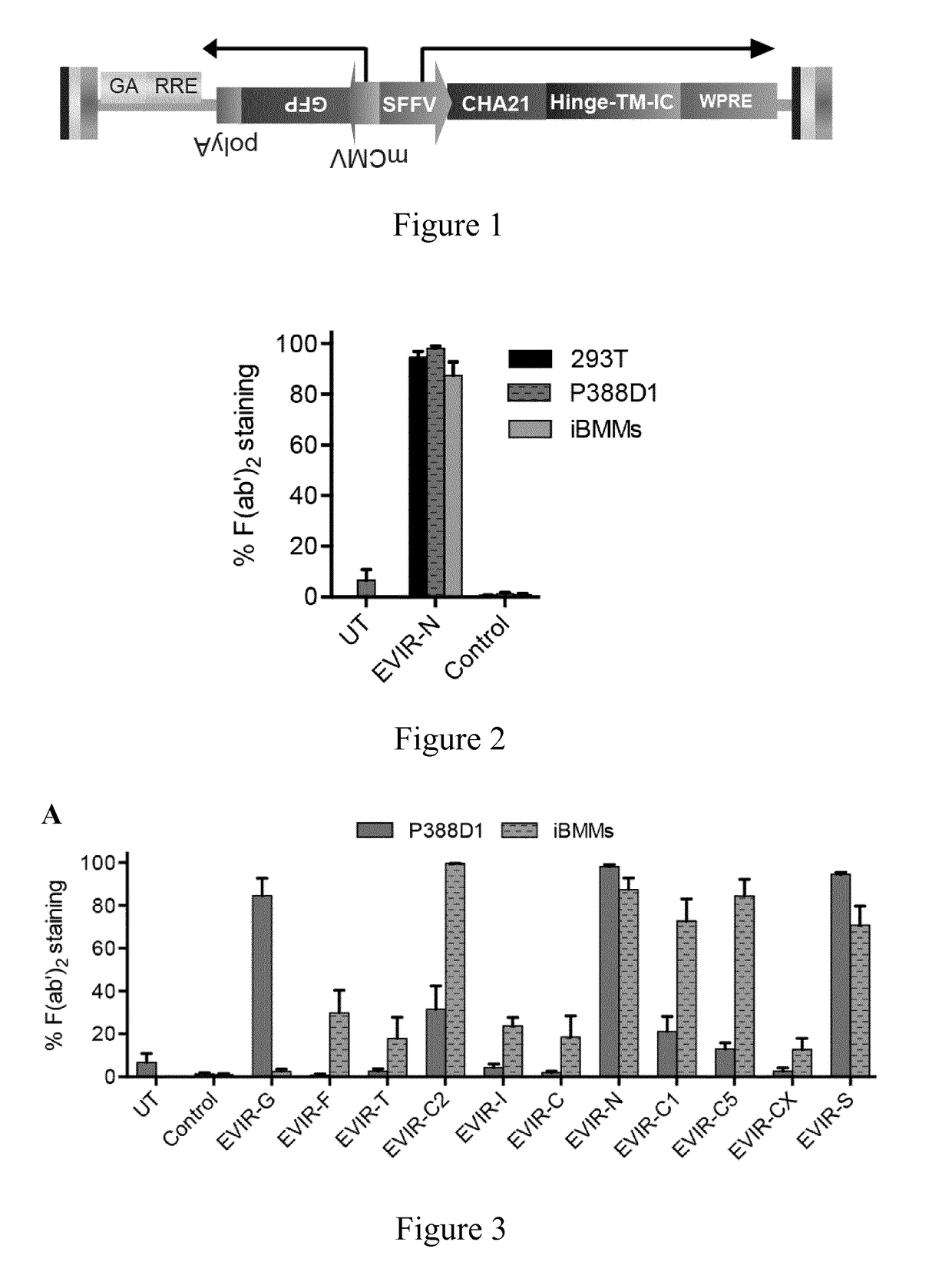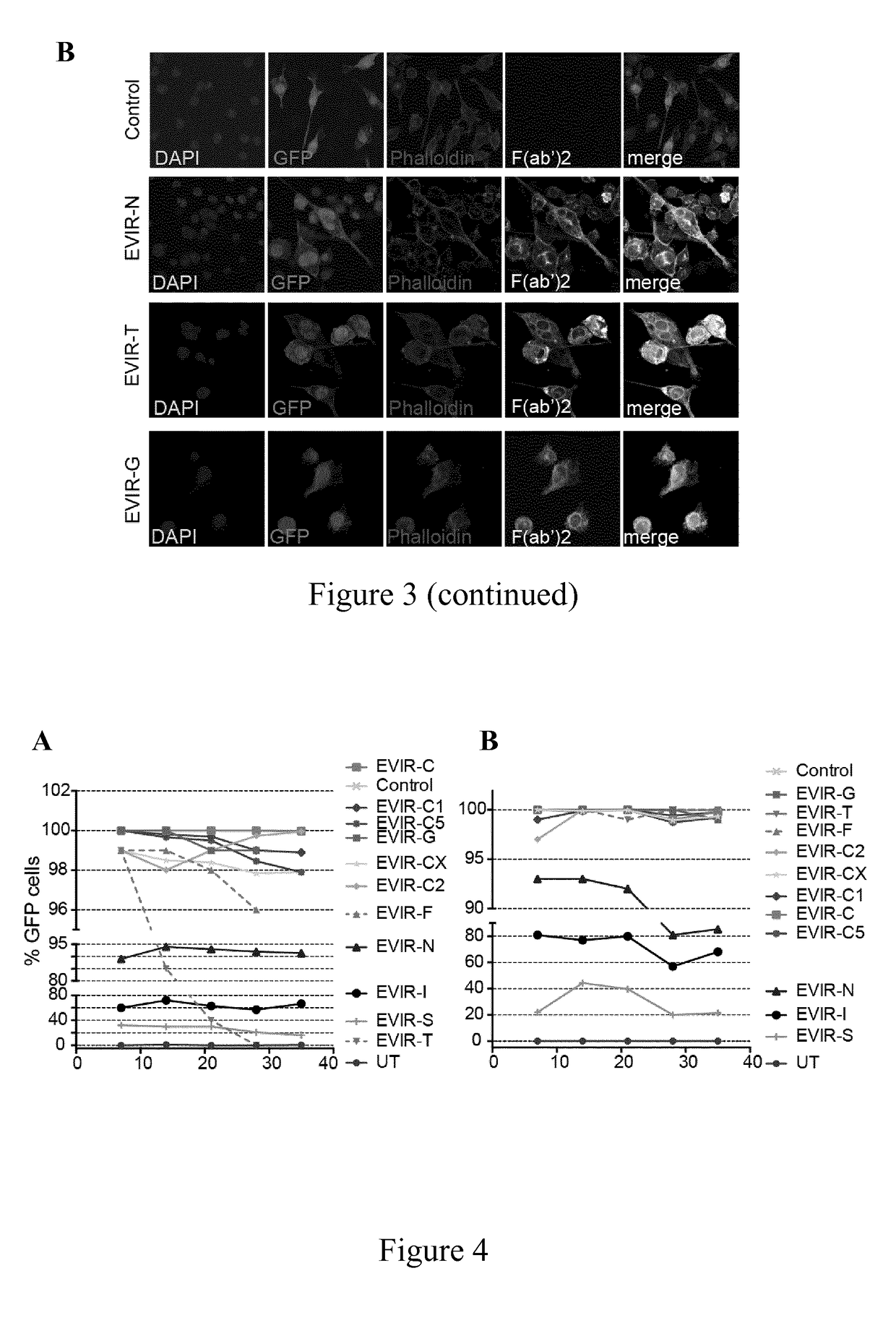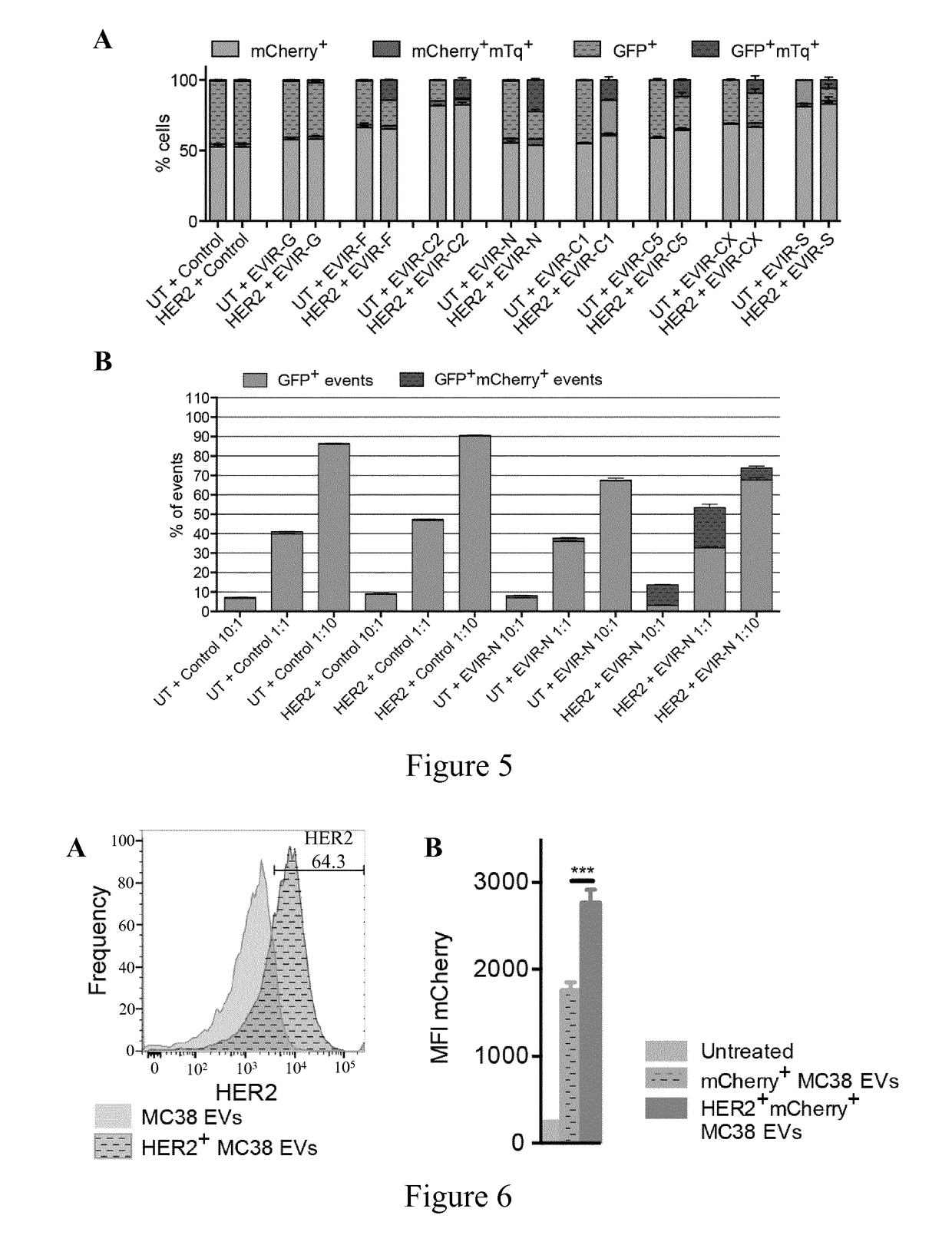Engineered antigen presenting cells and uses thereof
- Summary
- Abstract
- Description
- Claims
- Application Information
AI Technical Summary
Benefits of technology
Problems solved by technology
Method used
Image
Examples
example 1
Design of Extra-Cellular Vesicle Internalizing Receptor
[0304]11 different EVIR molecules were designed as follows.
[0305]Cloning Design of EVIRs
[0306]11 transmembrane receptors were selected and their intracellular (IC) domain, transmembrane (TM) domain, and a short extracellular (EC) domain were cloned in combination with the DNA coding sequence for the HER2-specific scFv termed CHA21 (SEQ ID NO: 128) (extracellular antibody domain specific for a surface molecule of a cancer cell).
[0307]DNA coding sequences from the selected transmembrane receptors were: the human nerve growth factor receptor (dLNGFR, SEQ ID NO: 43), FcγRIIIA receptor (a member of the Fcγ receptor family expressed by cells of the innate immune system, SEQ ID NO: 44), the receptor tyrosine kinase (FLT3, SEQ ID NO: 45), the toll-like receptor 4 (TLR4, SEQ ID NO: 46), the C—C chemokine receptor type 2 (CCR2, SEQ ID NO: 47), the integrin beta chain beta 2 receptor (ITGB2, SEQ ID NO: 48), the colony-stimulating factor-2 ...
example 2
Expression and Stability of an Anti-HER2 EVIRs
[0317]The stability and expression profile of EVIRs in different cells was tested.
[0318]Immortalized murine bone marrow (BM) derived macrophages (iBMM) were described previously (Squadrito et al., 2014, Cell Rep., 8(5):1432-46).
[0319]Briefly, the cells were obtained by transducing mouse BM cells with a LV expressing the proto-oncogene SV40 large T-antigen. iBMMs were cultured in macrophage serum free medium (SFM medium, Life Technologies), supplemented with macrophage colony-stimulating factor (M-CSF, 50 ng / ml). iBMMs were then cultured in Iscove's Modified Dulbecco's Medium (IMDM, Sigma-Aldrich), supplemented with M-CSF (50 ng / ml), 20% fetal bovine serum (FBS, EuroClone Group), 5.5 mL L-glutamine (Life Technologies) and 5.5 ml penicillin-streptomycin (Life Technologies).
[0320]Murine monocytes cell line (P388D1) and colon carcinoma cell line (MC38) were cultured in IMDM supplemented with 10% FBS, glutamine and penicillin-streptomycin, as...
example 3
Anti-HER2 EVIRs Enhance Monocyte / Macrophage Binding to Cancer Cells
[0336]EVIRs expression in cells on binding to monocytes / macrophages was tested.
[0337]Binding Assay in Co-Culture
[0338]Turquoise fluorescent protein (mTq) positive MC38 either expressing HER2 were obtained by transducing mTq− MC38 with a HER2 expressing LV, which was obtained by substituting the GFP coding sequence of a PGK. GFP LV as described in Amendola et al., 2005 (Nat biotechnol, 23(1): 108-16) with a HER2 coding sequence as described in Leto et al., 2015 (Clin Cancer Res. 21(24):5519-31). mTq+ MC38, HER2 transduced or untransduced, were detached according to standard protocol and seeded in 24-well plates (Corning Costar), 20,000 cells / well. After 24 h, iBMMs, transduced with either mCherry or GFP (EVIR)-expressing LVs, were detached according to standard protocols. 20,000 mCherry+ and GFP+ cells were mixed to a 1:1 ratio approx. and seeded on top of the mTq+ MC38 cells. After 24 h of co-culture, both cell types...
PUM
| Property | Measurement | Unit |
|---|---|---|
| Nucleic acid sequence | aaaaa | aaaaa |
Abstract
Description
Claims
Application Information
 Login to View More
Login to View More - R&D
- Intellectual Property
- Life Sciences
- Materials
- Tech Scout
- Unparalleled Data Quality
- Higher Quality Content
- 60% Fewer Hallucinations
Browse by: Latest US Patents, China's latest patents, Technical Efficacy Thesaurus, Application Domain, Technology Topic, Popular Technical Reports.
© 2025 PatSnap. All rights reserved.Legal|Privacy policy|Modern Slavery Act Transparency Statement|Sitemap|About US| Contact US: help@patsnap.com



